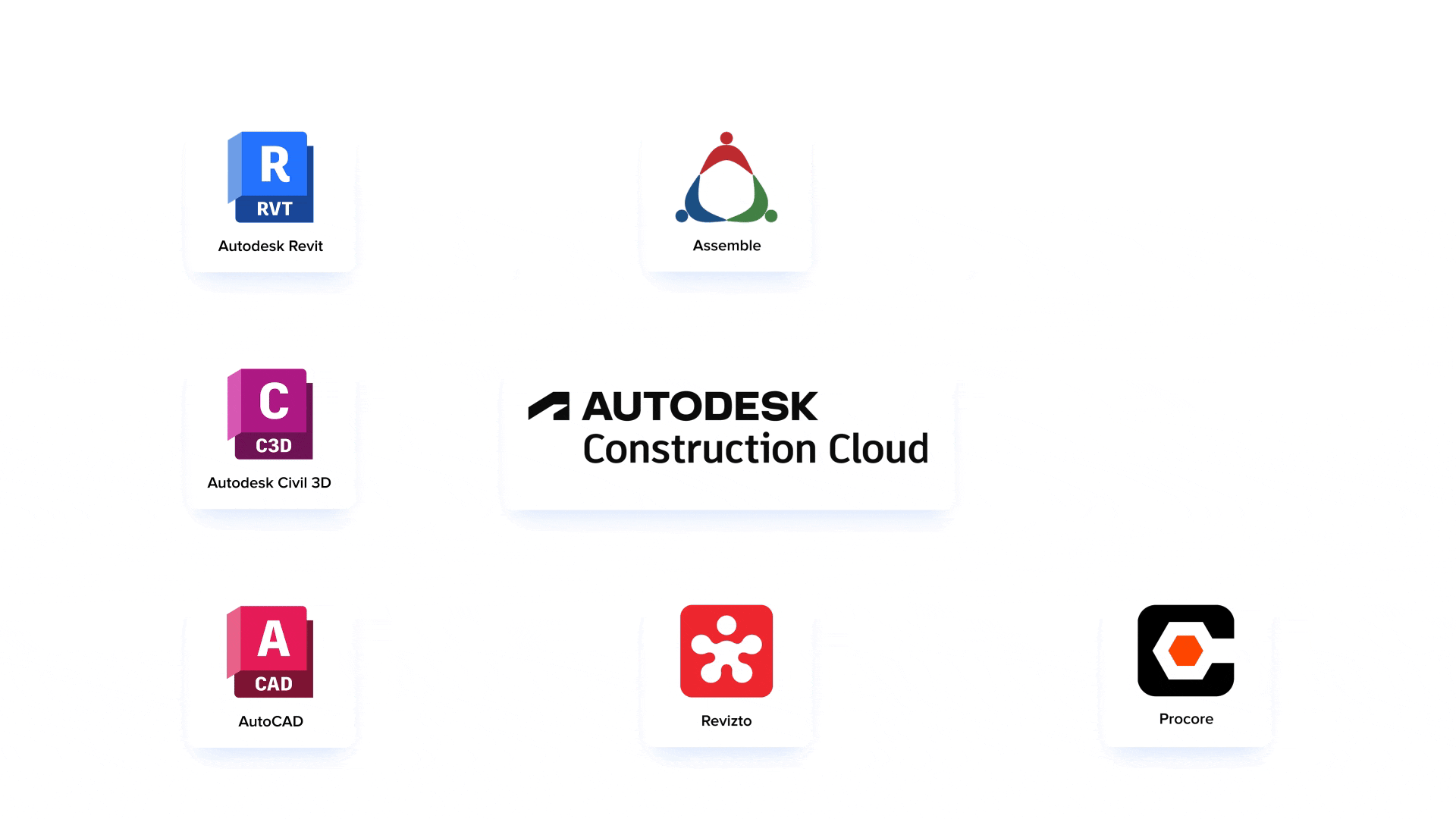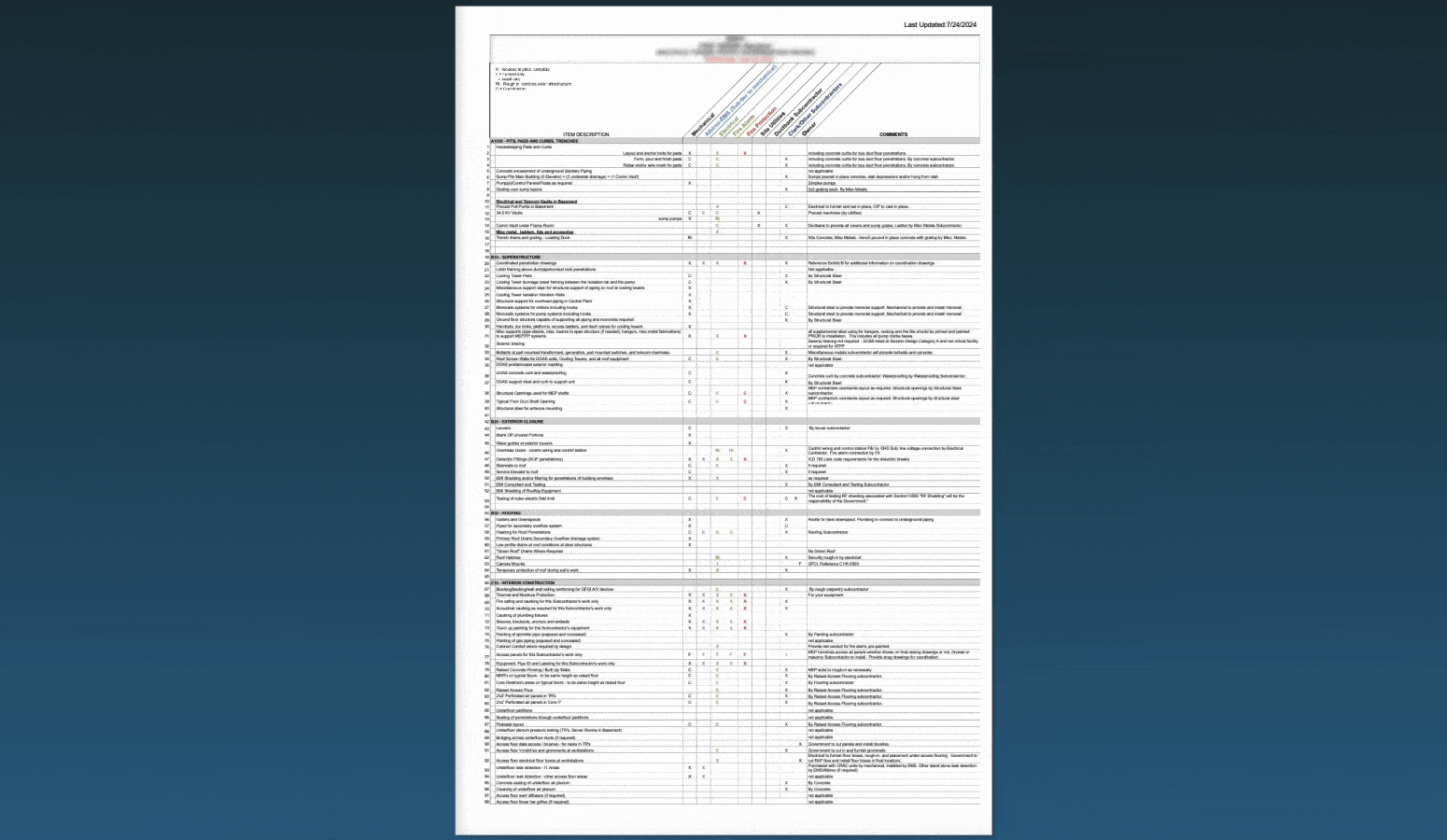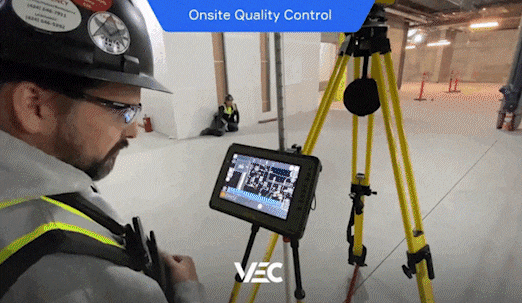
At VEC, end-to-end digital delivery represents a unified approach to project execution that connects every phase of a project through a single continuous digital thread. From programming and design through preconstruction and construction, each step is guided by data integrity, model fidelity, and collaboration across all stakeholders. Our goal is to ensure that the information created at each phase of a project not only supports decision-making in the moment but also builds enduring value for the owner and project team.
VEC’s digital delivery strategy transforms the traditional construction process into a fully integrated workflow that eliminates fragmentation. This approach aligns design intent with field execution by linking technology, people, and process through model-based delivery. The result is a seamless exchange of information that enhances communication, improves predictability, and drives higher accuracy at every stage of the project life cycle. Each element of the model is developed and validated according to defined Levels of Development (LOD), progressing from LOD 200 during early programming to LOD 350 during design, LOD 400 during preconstruction, and LOD 500 at project closeout. This structured framework ensures that what is designed is constructible, and what is built is verifiable.
At its core, VEC’s approach is about transparency and trust. By integrating digital delivery into every stage of a project, we help clients gain control over design, schedule, and execution. The result is a new standard of performance—projects delivered with precision, predictability, and measurable impact. Whether supporting mission critical data centers, complex infrastructure systems, or healthcare facilities, VEC’s digital delivery process ensures that every model, drawing, and decision contributes to one unified goal: building better, together.

Through the use of cutting-edge platforms such as Autodesk Construction Cloud, Revizto, and CM Builder, VEC enables project teams to visualize and coordinate every detail in a shared digital environment. This technology framework allows for real-time updates, clash detection, schedule simulation, and logistics planning to be integrated within a single system. The result is not only greater accuracy in the field but also improved accountability and traceability across teams. By maintaining a common data environment, we empower each stakeholder—from designers and engineers to field supervisors and owners—to make informed decisions with full transparency.

This is where VEC’s end-to-end digital delivery provides its greatest impact. Powered by BIM and VDC, it transforms the design stage from a fragmented, reactive process into a fully coordinated, data-driven workflow. Integrating all disciplines into a shared 3D model allows us to spot design conflicts early, ensure compliance automatically, and test constructability and performance before construction begins. This results in stronger project resilience and a seamless handoff to subsequent project phases — gains that are rarely achieved without BIM.

Prefabrication and modularization are key benefits realized during preconstruction. With complete digital visibility, components can be manufactured off-site with confidence and assembled onsite with minimal rework. This increases speed to market and reduces waste, while maintaining the highest levels of quality. Our teams collaborate with trade partners to establish fabrication-ready models, bringing predictability to scope, sequencing, and cost planning. Owners benefit from this integration through reduced risk, enhanced performance, and operational readiness at project handover.

Our commitment to end-to-end digital delivery extends beyond model creation. It includes process governance, standardized workflows, and quality assurance practices that ensure consistency across projects and disciplines. Every deliverable is grounded in measurable outcomes that improve safety, schedule performance, and cost efficiency. VEC’s onsite quality control team verifies field conditions against digital models to confirm constructability and ensure that installation aligns precisely with design intent. This connection between digital and physical environments allows us to deliver projects faster and with higher accuracy than traditional methods.
Even if you choose the right project delivery method and work with the best contractors, the construction process can become a gamble. But with our enhanced visual design services, you can think through and execute all details to see the future of your project. That is crucial for anticipating and addressing issues before they happen. Partnering with us means you will benefit from predictive construction technology during design.
VEC’s Site Logistics & Sequencing service transforms fragmented construction planning into a unified, dynamic coordination platform that integrates 3D models, CPM schedules, and site operations into a single environment. Our approach enables project teams to visualize, validate, and optimize construction sequences before field operations begin—reducing conflicts, improving safety, and ensuring smooth communication among stakeholders throughout the project.
Change is the only constant. Redeveloping your next building, large or small, should be based on precise existing conditions and not “unforeseen factors.” 3D Laser Scanning allows you to eliminate the uncertainty, elevate the design, and realize the installation through millimeter-precise, true as-built conditions.
We live in the information age, where data can either empower critical decisions, or delay solutions by burying problems under mountains of frivolous information. We provide targeted implementation steps customized to your project conditions to ensure successful results.

When providing BIM coordination services, VEC guarantees proper cost analysis for the project. Our detailed, real-time cost information covers schedules, prices, and quantities. Our data includes equipment, materials, and labor costs as well as analysis and updates to the relevant data during the construction lifecycle. Apart from helping estimate and predict your project’s ROI, our cost analysis can improve your current Bills of Material (BOMs) and Bills of Quantities (BOQs).

